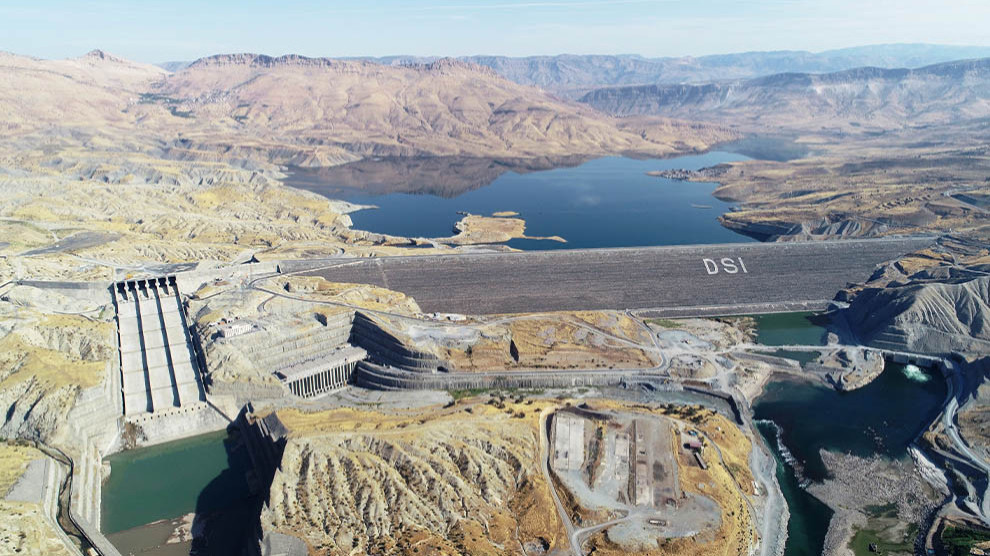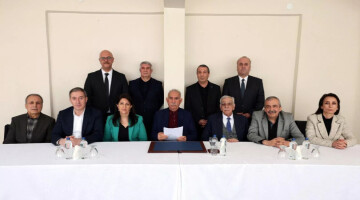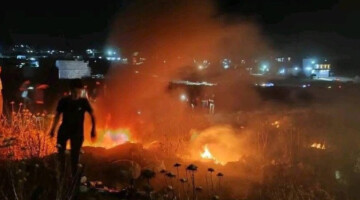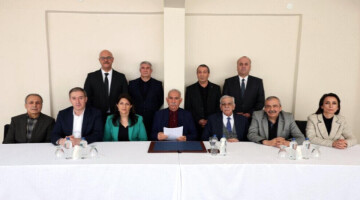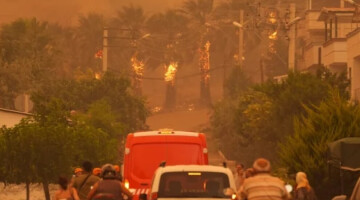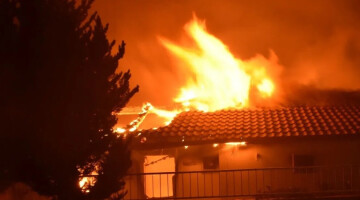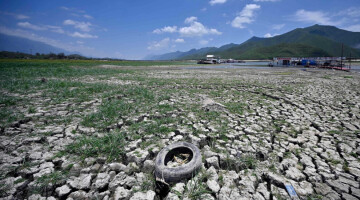For years the Turkish state has been building dams and hydroelectric power plants (HES) in Kurdistan. The dam problem leads to great environmental destruction and equally great profits. At the moment 50 dams are under construction or in the planning stage. In the Tigris Basin not only the main river is dammed, but also 32 dams are planned on all tributaries. All these dams represent a drastic devastation of Kurdistan's nature. In addition to the endemic plants, many endangered animal species will also be wiped out by the dams. But the destruction is not limited to this: the dams are also promoting climate change in the region. The amount of snowfall in winter has decreased by 75 percent in the last ten years. Some areas suffer from extreme drought, while others are flooded by heavy rainfall. This shows that the climate in Kurdistan is out of balance.
ANF spoke with Doğan Hatun, the secretary of the Chamber of Engineers and Architects (TMMOB) Coordination for Amed (Diyarbakır) province, about the ecological consequences of the dams.
Tigris has no river status and is therefore legally unprotected
Hatun points out that dams are causing massive ecological problems all over the world, but that he is not aware of any other case in which a river is cut off from its own tributaries, just like the Tigris. The creatures living along river courses normally orientate themselves on the natural swelling and decay of the river. However, due to the artificial modification of the water quantity of the river, the living beings at the water are acutely threatened.
"There is another problem: the lack of a legal status as a river. For example, the Tigris has no river status for 60 kilometers, which means that the riparian regions are also not legally protected. We don't know whether this erroneous definition in 1990 was a coincidence or not, but the Tigris dam was put into operation in exactly the same year. Anything can be done on the banks of rivers that do not have river status, because these areas are not legally defined. Because of this lawless situation, the State Water Authority (DSI) has kept an eye on these areas for its projects. Since the Tigris Valley is part of the UNESCO World Heritage Site, there is not much more they can do here. But they have already implemented many projects there before. Every governor has implemented such dam projects at his own discretion, against the interests of the population," Hatun criticizes.

22 sand pits on the Tigris
According to the Riparian Act, no construction work may take place up to a distance of 50 metres from the bank in order to protect the main stream of a river, Hatun recalls and continues: "But since some areas in the Tigris valley are not recognized as river courses, the State is building there at its discretion and destroying the river. So there are 22 sand pits directly on the river. These pits have been destroying the Tigris for years. All the sand for buildings outside Sur comes from there. Even sand pits whose licenses have long since expired are still in operation because they belong to supporters of the government."
12,000 years of history thrown away
Regarding the destruction of the ancient town of Hasankeyf, which has been inhabited for 12,000 years, Hatun says: "Not even in so-called Third World countries does it happen that an area like Hasankeyf is flooded. No people, once they have even the slightest awareness of their history and culture, would watch a place like Hasankeyf disappear into the water of the Ilisu Dam. For the sake of 50 years of electricity production, the State is throwing away 12,000 years of history. Only two historical pieces that fit it were torn out and taken away. The State pretends to attach importance to historical objects. Does history consist only of that tomb or the mosque? There were residential caves thousands of years old. There was so much history in Hasankeyf that could have revolutionized official historiography. But no responsibility is taken for that."

32 new dams on the banks of the Tigris
Regarding the construction of 32 dams on the Tigris, Hatun warns: "This could have very negative effects on the groundwater. Because when you build a dam, you create a gigantic mass that exerts pressure on the groundwater. The groundwater either flows away or cannot collect. So it becomes more and more difficult for all living beings to access their basis of life, the groundwater. Forests, which are important sources of oxygen, are drying out. The climate is changing. Thus, life in Amed in summer is now unbearable. Even in the past there was extreme heat there, but it was possible to cool down in the shade of a tree. Today, however, the humidity rises due to the dams. This makes life in the city practically impossible. We can speak of a tripling or even a quadrupling of the air humidity. In addition, snowfall has seriously decreased in winter."
Hatun underlines that in 100 years at the latest, drinking water will have been dangerously depleted by the dams and proposes to generate electricity from wind and sun.
"We will not participate in such destructive projects"
The TMMOB clearly distances itself from such destructive projects, Hatun emphasizes and adds: "We may not have the strength to solve the problems, but we can follow them and inform the public. That is our real task. With technical reports and feasibility studies we can educate society. We will not be involved in actions that make some people rich and plunder the lives of others. We can appeal to the international public and report to people around the world and in the region about the damage caused by dams and similar projects. But unfortunately, we do not have the power to stop these projects."

